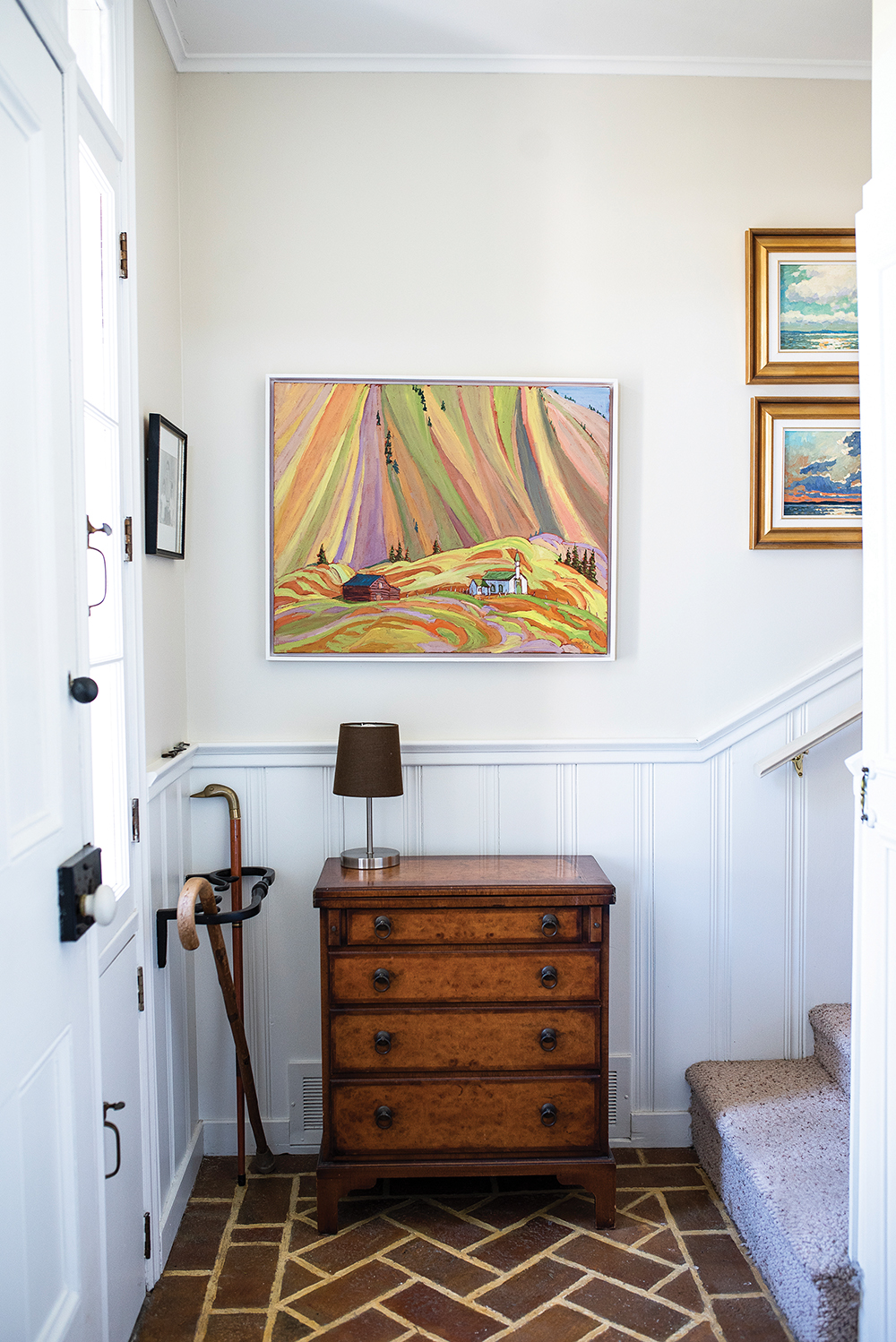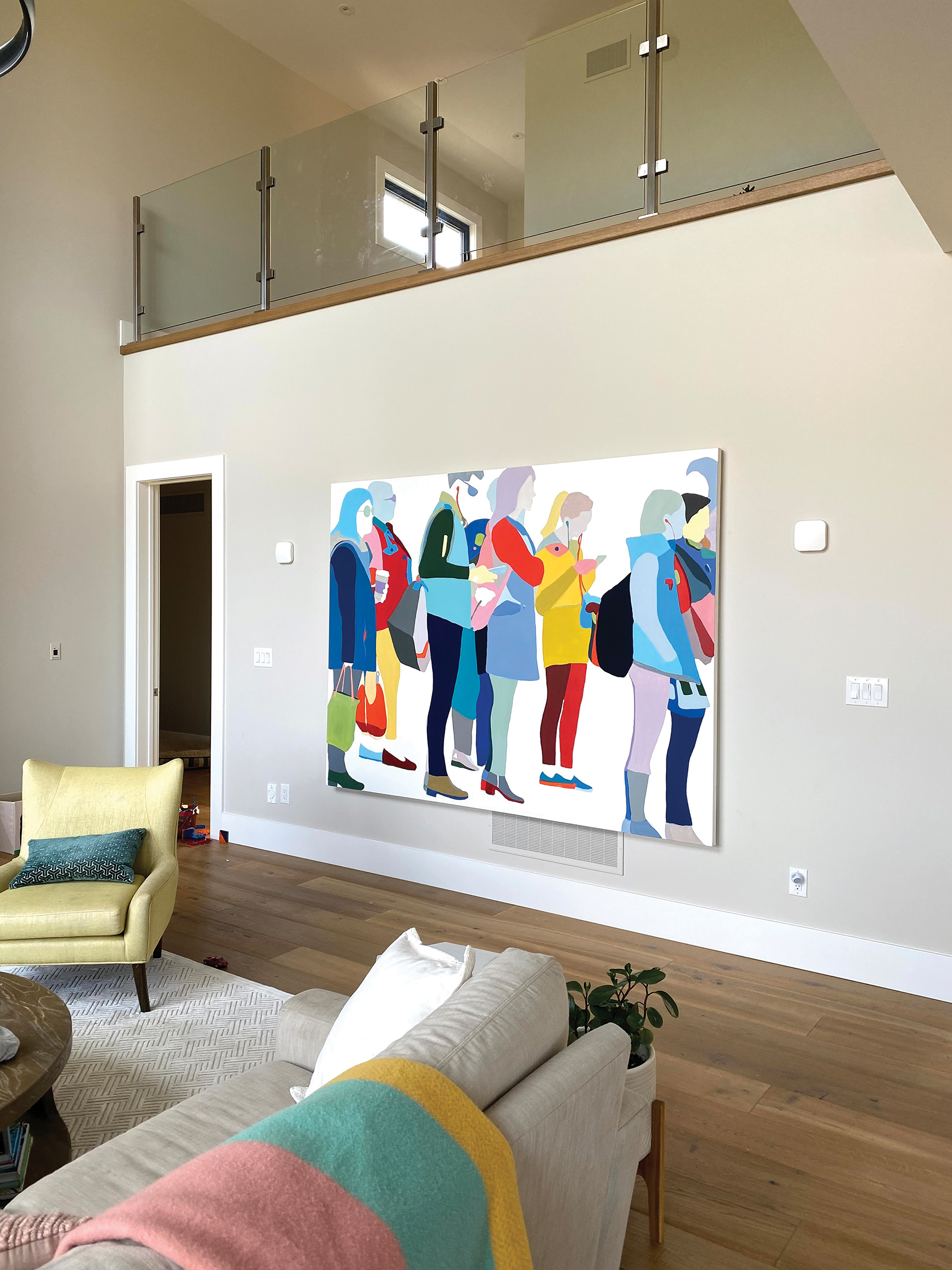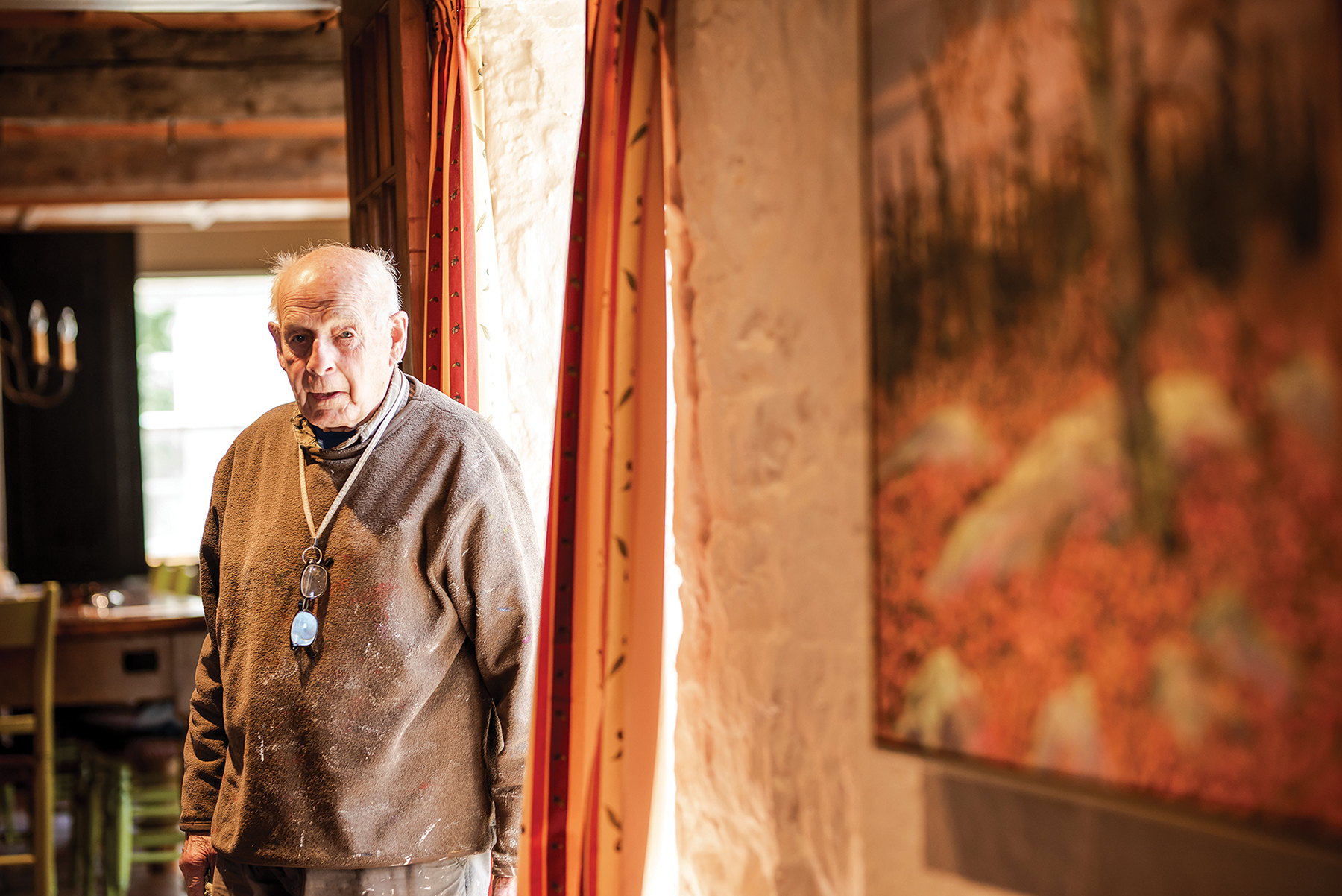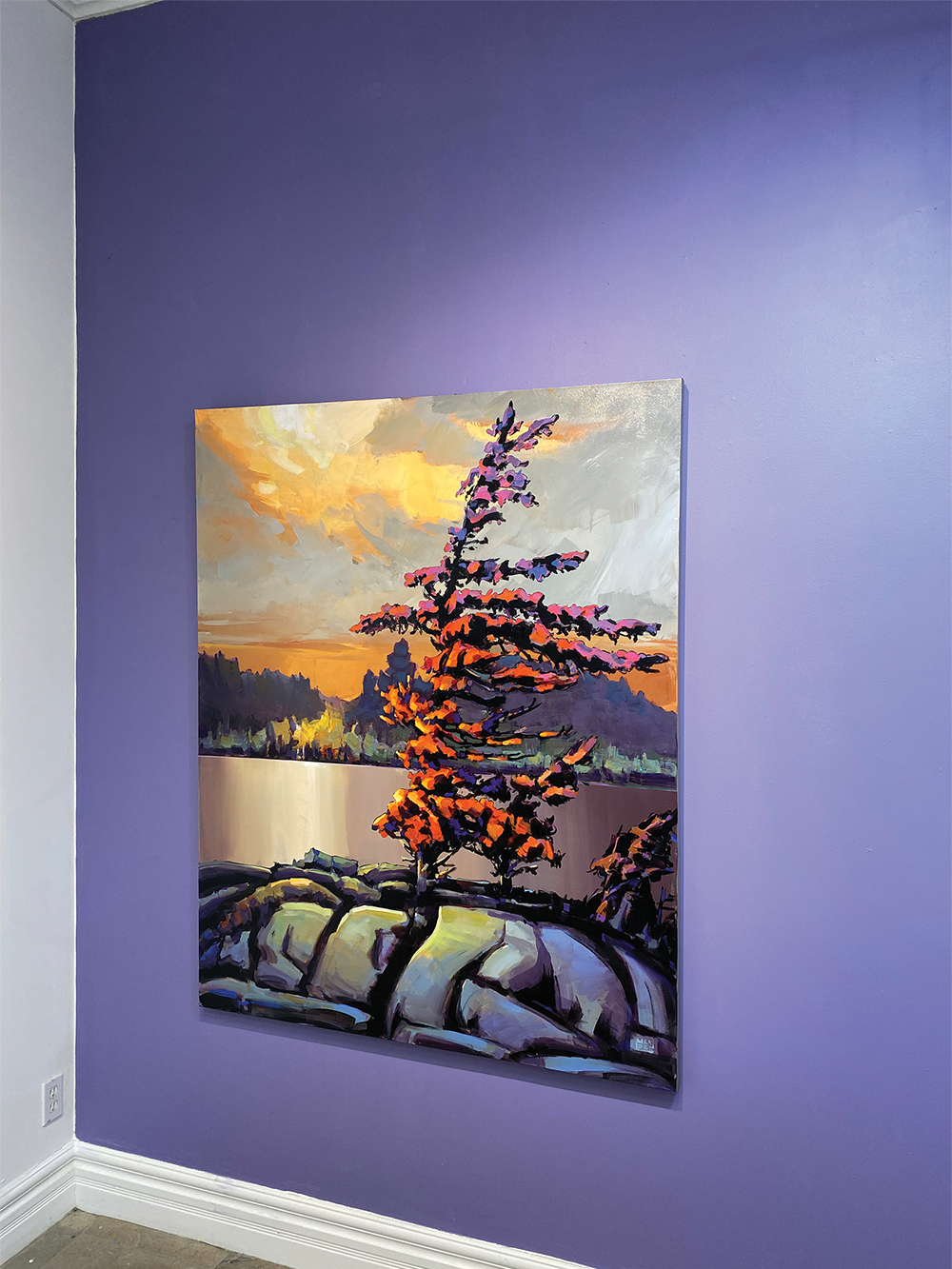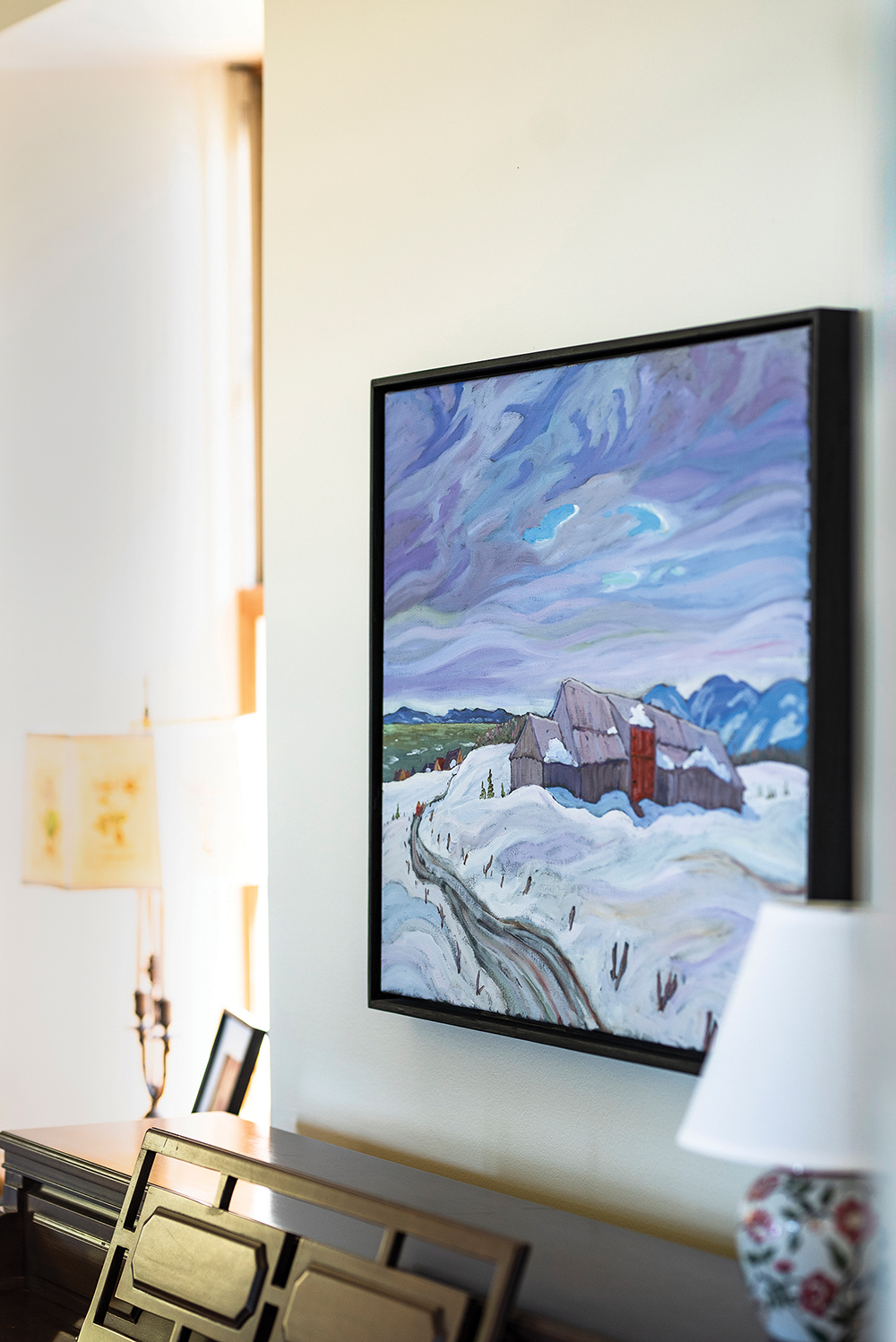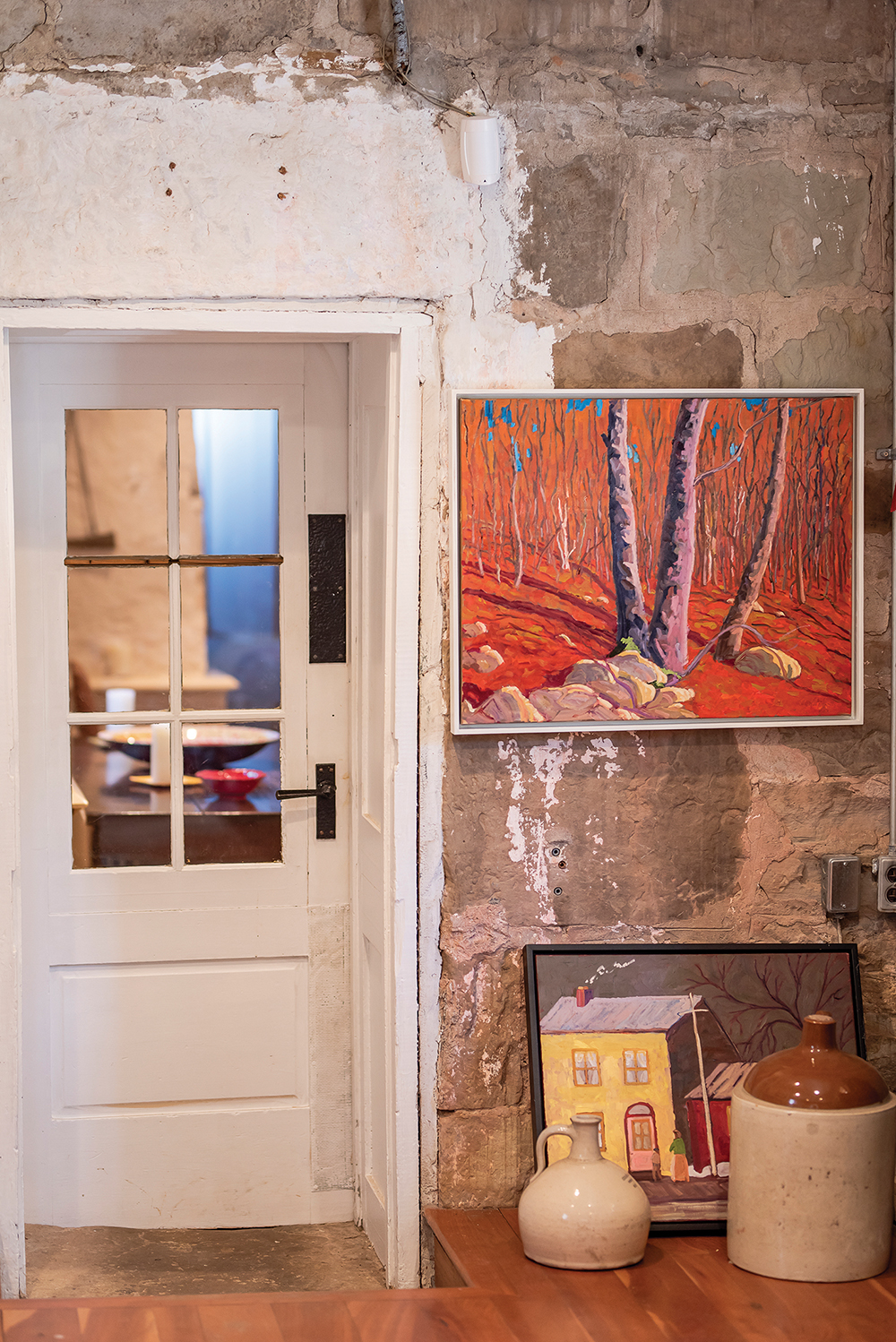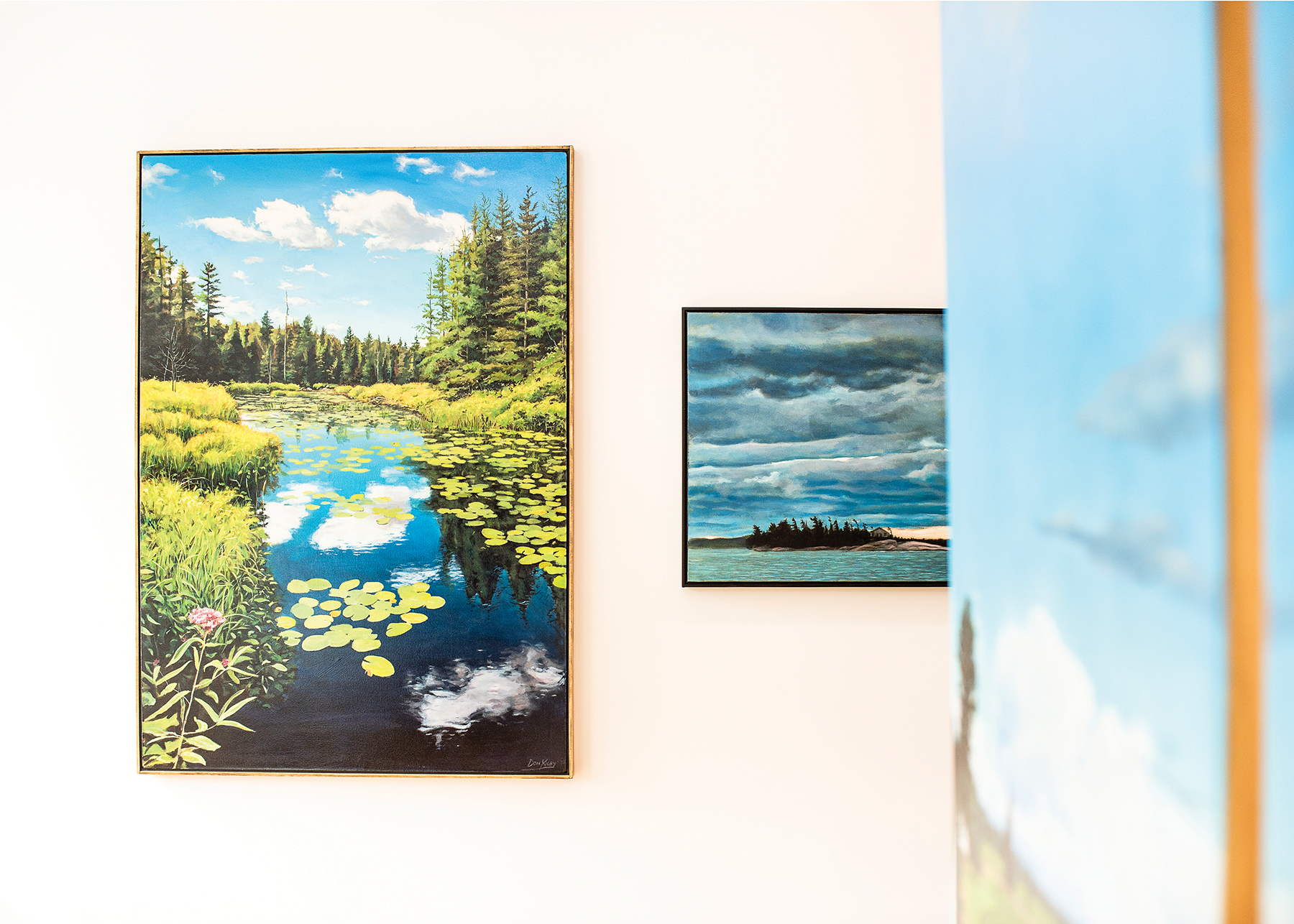Lockdowns and Zoom calls have elevated the importance of art in beautifying our walls and interior spaces
by Judy Ross, photography by Jessica Crandlemire
It’s a dark day in late spring, still deep in the pandemic, and my computer screen is bright with the sun-splashed image of a summer lake. I have clicked on a painting, an original oil on canvas, and zoomed in to the thick brush strokes. Streaks of white capture sunlight shimmering across the water. For days I’ve been scrolling through websites and browsing digital platforms looking at this artist’s work.
In normal times, I would have attended a gallery opening, met the artist in person, sipped a glass of wine or two, and watched red dots appear as paintings sold. But the traditional art market ground to a halt in March 2020 and with it the old-school ways of buying art, which included gallery visits, trips to museums and art fairs, attending festivals and studio tours, and the chance to meet artists and art dealers in person.
Browsing online, I found my lake painting for sale at the Art Gallery of Hamilton, which was closed due to COVID. Not planning to purchase without a ‘live’ viewing, I contacted the gallery administrator. She arranged to ship the 3×4-foot painting to my home in Collingwood, on approval for 48 hours.
It arrived packed carefully in bubble wrap and cardboard and was more luminous than I expected, with more depth than the online version. I loved it. And thus I became one of thousands of art lovers who has discovered buying, or at least searching, for art online.
At Butter Gallery in Collingwood, despite the pandemic, the past year has been a very good one. “People have really been on a mission to buy art,” says Suzanne Steeves, co-owner of the gallery. “Part of the reason is Zoom calls. Everyone became a décor critic and conscious of what was being seen in the background on Zoom meetings. People want something more interesting than a blank wall or a messy bookshelf.”
Gallery owners say that many clients have become comfortable buying art online without having an in-person gallery visit. Millennials, who represent a growing sector of the art buying market, are more adept at using digital platforms. Video calls are one way to present a painting to a prospective buyer, zeroing in for close-up details and then moving around to show the piece from different angles and in different light situations. According to gallery owners, buyers who are already familiar with an artist’s work are more inclined to make a purchase this way.
“Generally there are fewer online sales in the higher price ranges,” notes Steeves. “People want to see it in person if they’re spending five figures or more.” But, like other gallery owners, Steeves and her partner Andrea Rinaldo are constantly working on new ways to connect during these pandemic days. “We sometimes get clients to send a photo of their room and wall space and then we can digitally superimpose the painting on the wall,” she explains. “It can give a pretty good idea. It’s never going to be the same pleasurable experience as being inside the gallery and seeing the painting up close, but we are doing everything to make it work.”
Heather Carroll, owner of the Loft Gallery in Thornbury, observes that, “rather than lamenting over what we have lost, artists have had to develop and adapt to a new way of doing business.” One ingenious example is her gallery’s ‘Art In A Box’ painting classes. In normal times, these popular painting workshops with artist Janet Liesemer were held onsite at the gallery. Now, through a joint effort of the gallery and the artist, these boxes are available through the gallery website and allow people to work with the artist and create at home.

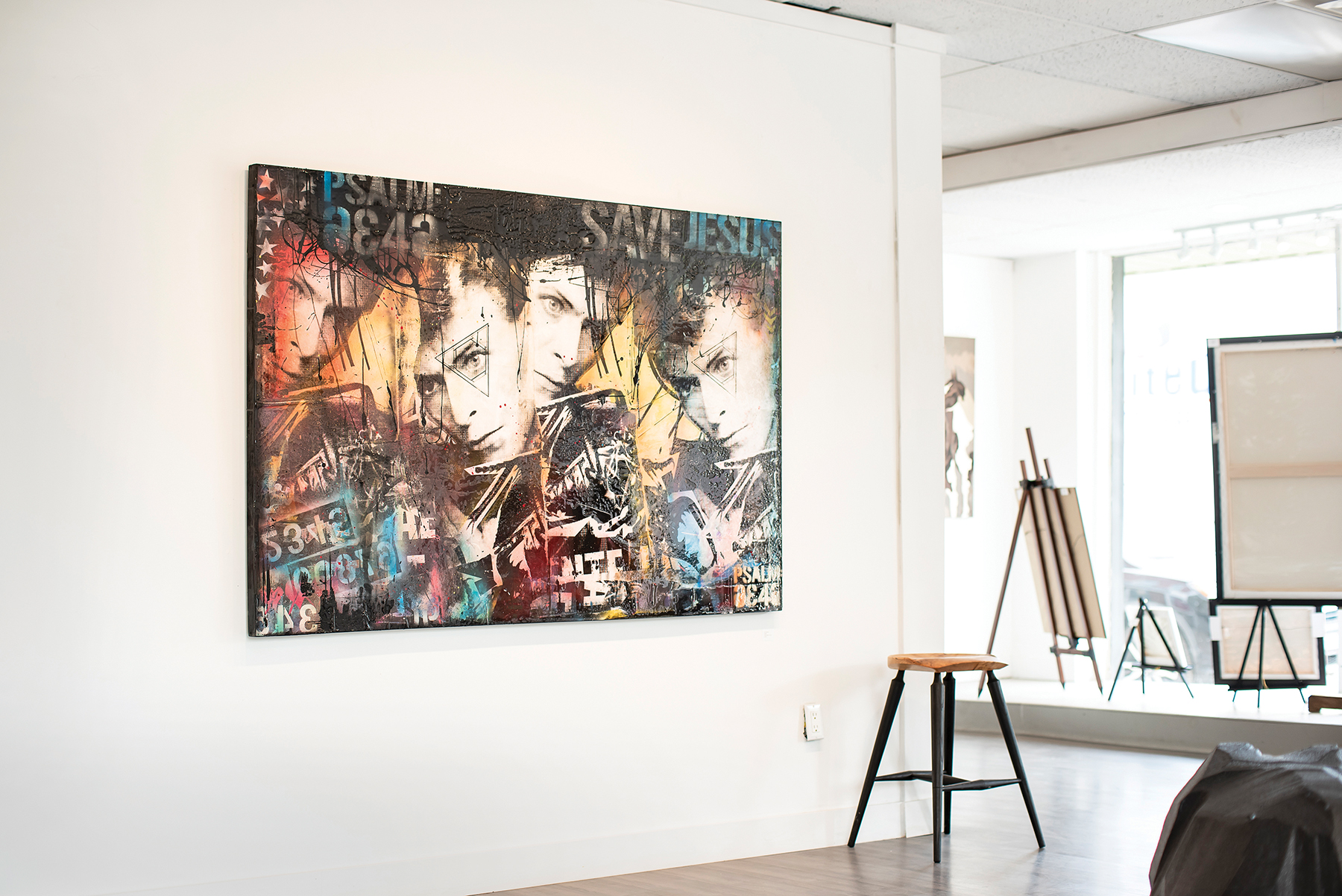
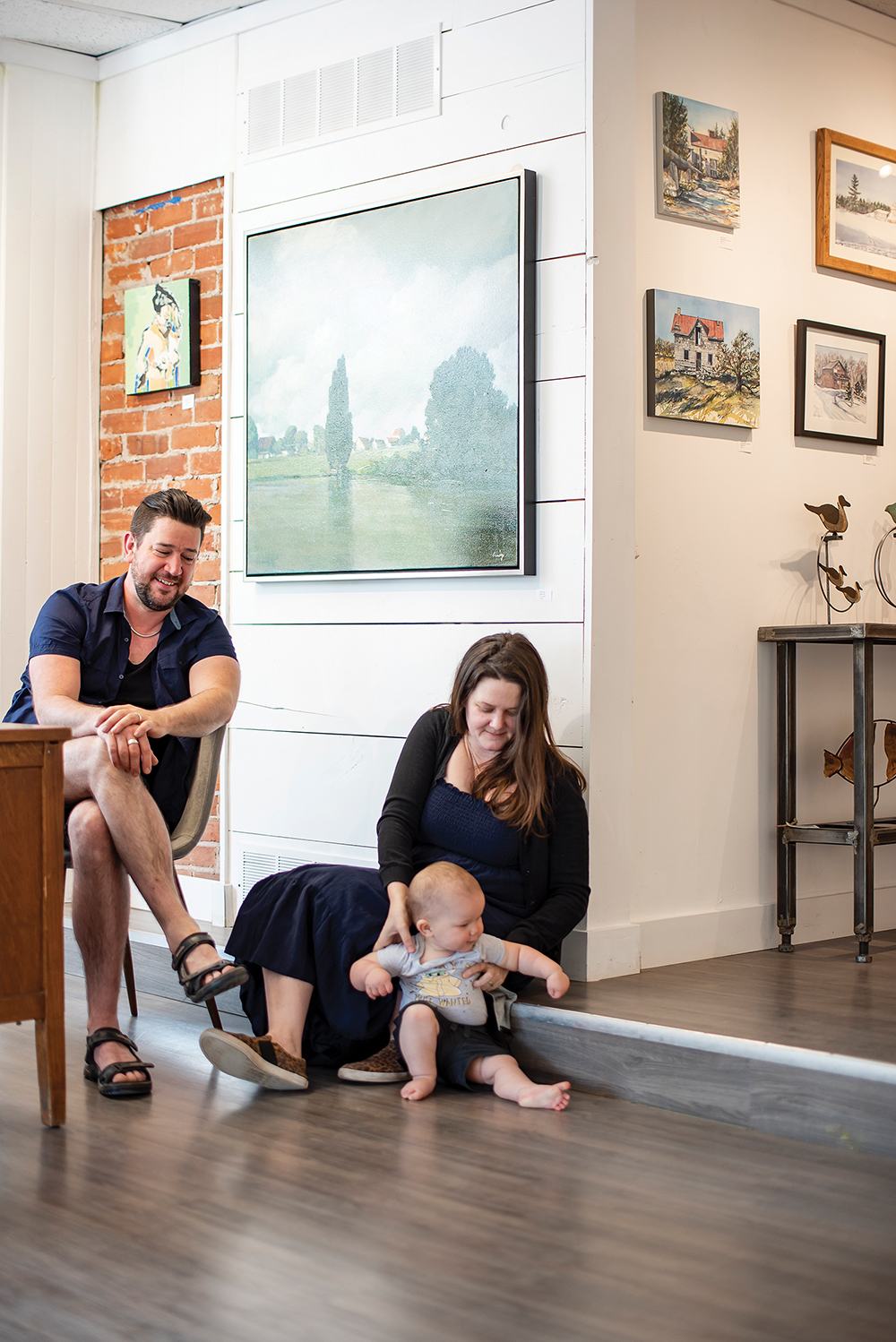
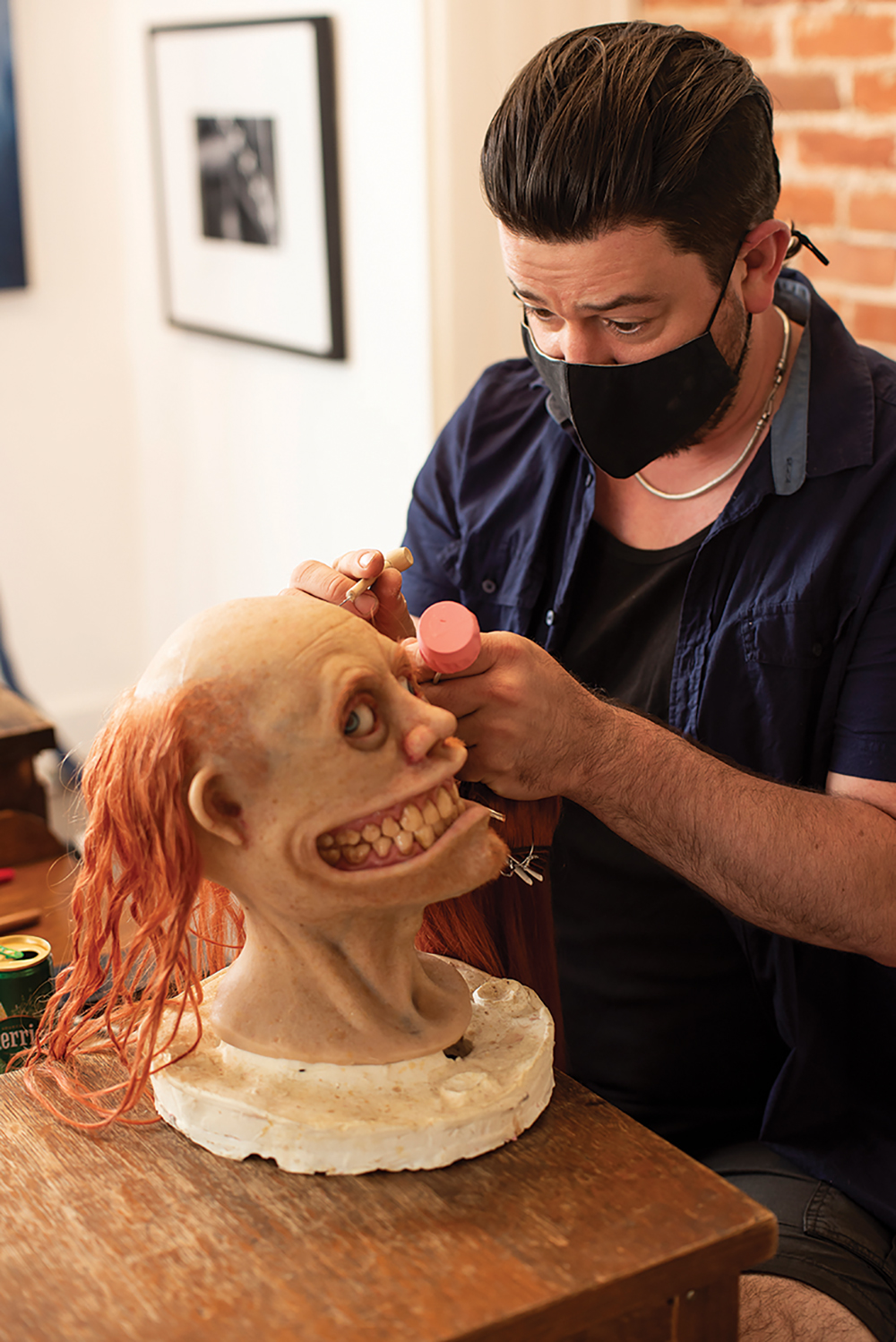
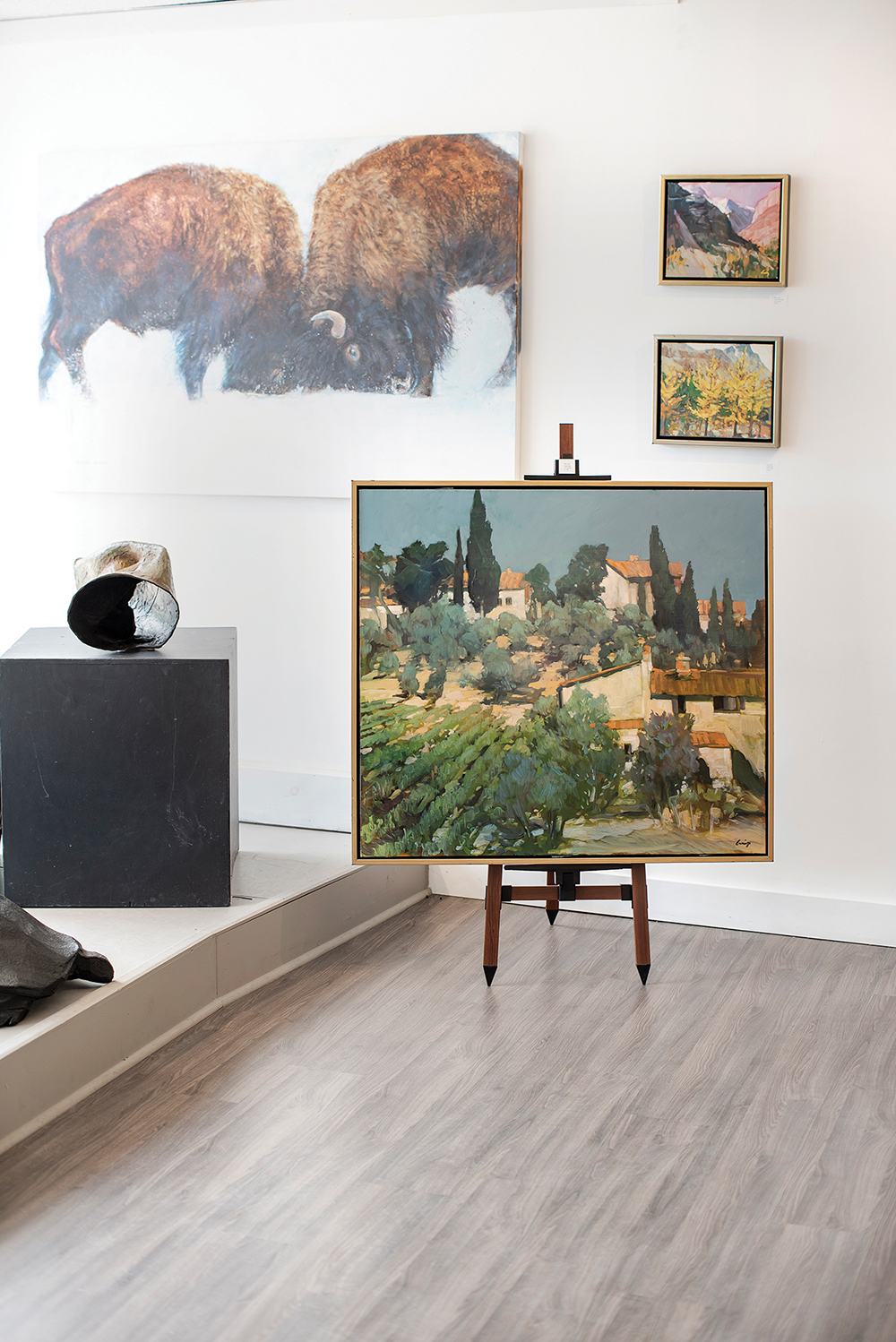
Liesemer has put together a number of the art boxes, each with a different image. Included in the box is everything needed to complete the painting (paint, brushes, paper, etc.) along with a link to a YouTube video of the artist teaching step by step how to paint the image. “It is truly the next best thing to being with her live,” enthuses Carroll.
Other Loft Gallery artists such as Jennifer Woodburn, Debra Lynn Carroll, Lorne McDermott and Brian Buckrell have also been finding new ways to connect now that the gallery is closed. Growing a social media platform is now essential for all artists. Woodburn has started her own online store, which allows buyers to scroll through her artwork and see photographic examples of it in situ.
“It’s been a challenge for them to stay motivated during this emotional rollercoaster,” says Carroll of the challenges artists have faced through the pandemic. “I am amazed at how they’re coping.”
The artists at the Tremont building in Collingwood suffered a double blow this past year. First the restaurant on the main floor closed and then COVID hit. “We all suffered when the restaurant closed,” says Bill Franks, one of the 12 artists who rent studio space on the second floor of the heritage building, “because a lot of our sales came from people coming upstairs before or after a meal and browsing through our studios.”
But then last fall, despite the pandemic and the shuttered restaurant, sales picked up. “We were seeing people by appointment only,” says Franks, “but there was suddenly a big demand for art. People were stuck at home, nobody was travelling, and they were tired of staring at their walls. They wanted to spend money on making their homes more appealing. I sold 70 paintings between September and December.”
Online marketing allows artists to reach a broader audience. Sites like Saatchi Art, Gallea and Singulart have enjoyed increasing traffic. Etsy, an online arts marketplace, reported a 95 per cent increase in searches for wall art (comparing March to December, 2020 with the same nine months in 2019.)
Nottawa-based artist and entrepreneur Lory MacDonald was running a successful business producing art festivals – live events that took place over long weekends in Toronto and Kingston. These festivals showcased everything from gourmet food to music to poetry readings and arts and crafts with up to 225 artists exhibiting their wares. And then COVID hit. “Everything got cancelled,” she laments. “My life imploded. I wasn’t prepared for this at all.”
MacDonald turned her energies to empowering artists to sell their work online. “A lot of artists live in remote areas with poor internet. They’ve been left with no way to reach the public.” She has built a permanent online store (shop.artfestontario.com) featuring a range of artworks and has teamed up with local organizations like the Blue Mountain Foundation for the Arts (BMFA) to allow artists to showcase and sell their work.
Even multi-million-dollar purchases of art are taking place online. The venerable art auction house Sotheby’s held more than 100 online sales between March and June last year and sales totalled $200 million dollars. The same period (pre-Covid) in 2019 saw 40 online sales and brought in $23 million Dollars.
Some businesses benefit from people being cooped up at home, staring at walls and being sick of what they see. With real estate skyrocketing, it made sense to beautify our home investment, and make it more liveable. Buying art is a good way to do that.
In our area the influx of city escapees purchasing homes, or renovating existing ones, has boosted business for builders and anyone connected to homes and renovations. Some artists have teamed up with realtors, arranging to have their work on the walls of a home listed for sale so it can be viewed by potential buyers. Even when open houses got cancelled and home showings went virtual, the artist’s work could still be seen, which often led to a purchase.
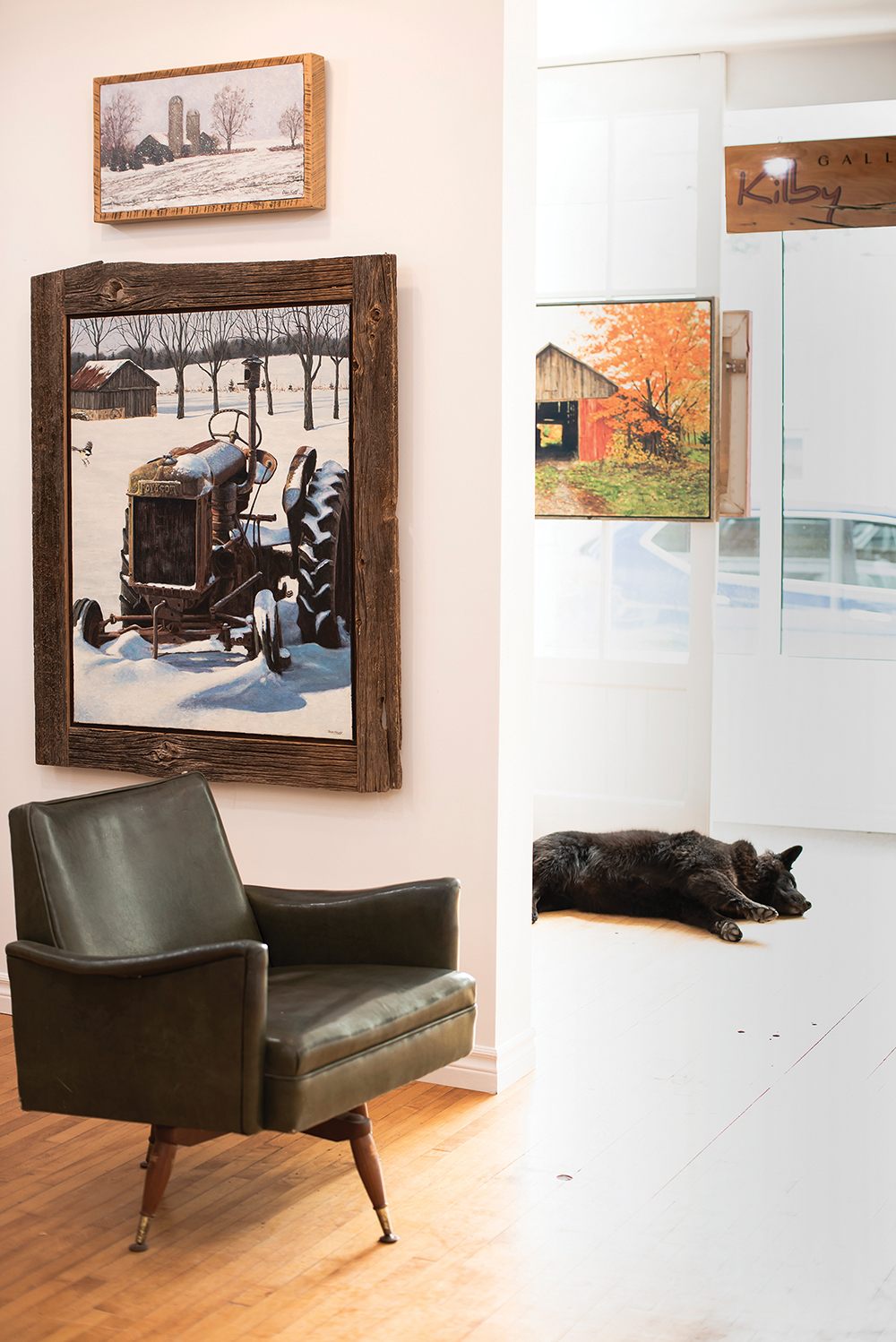
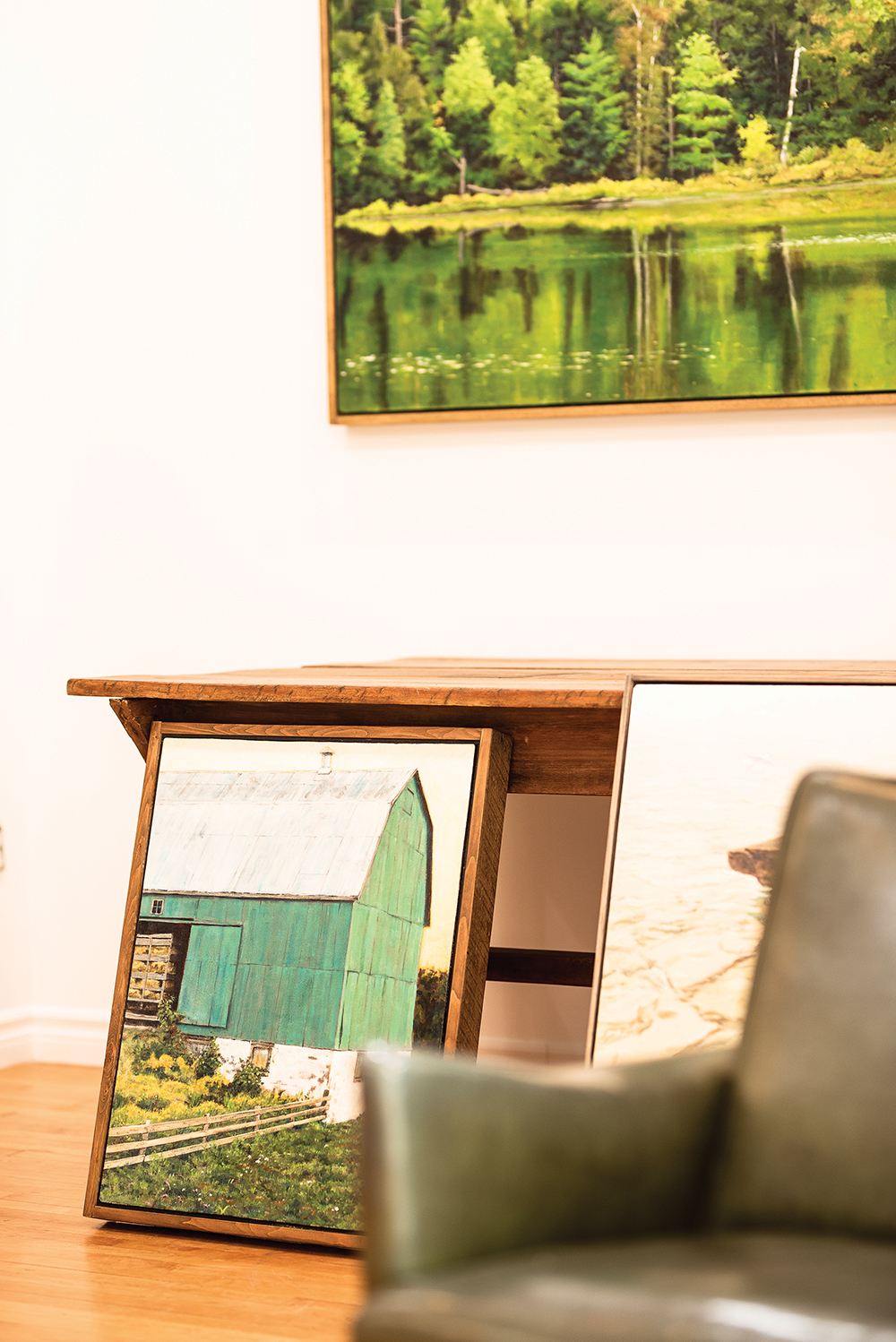
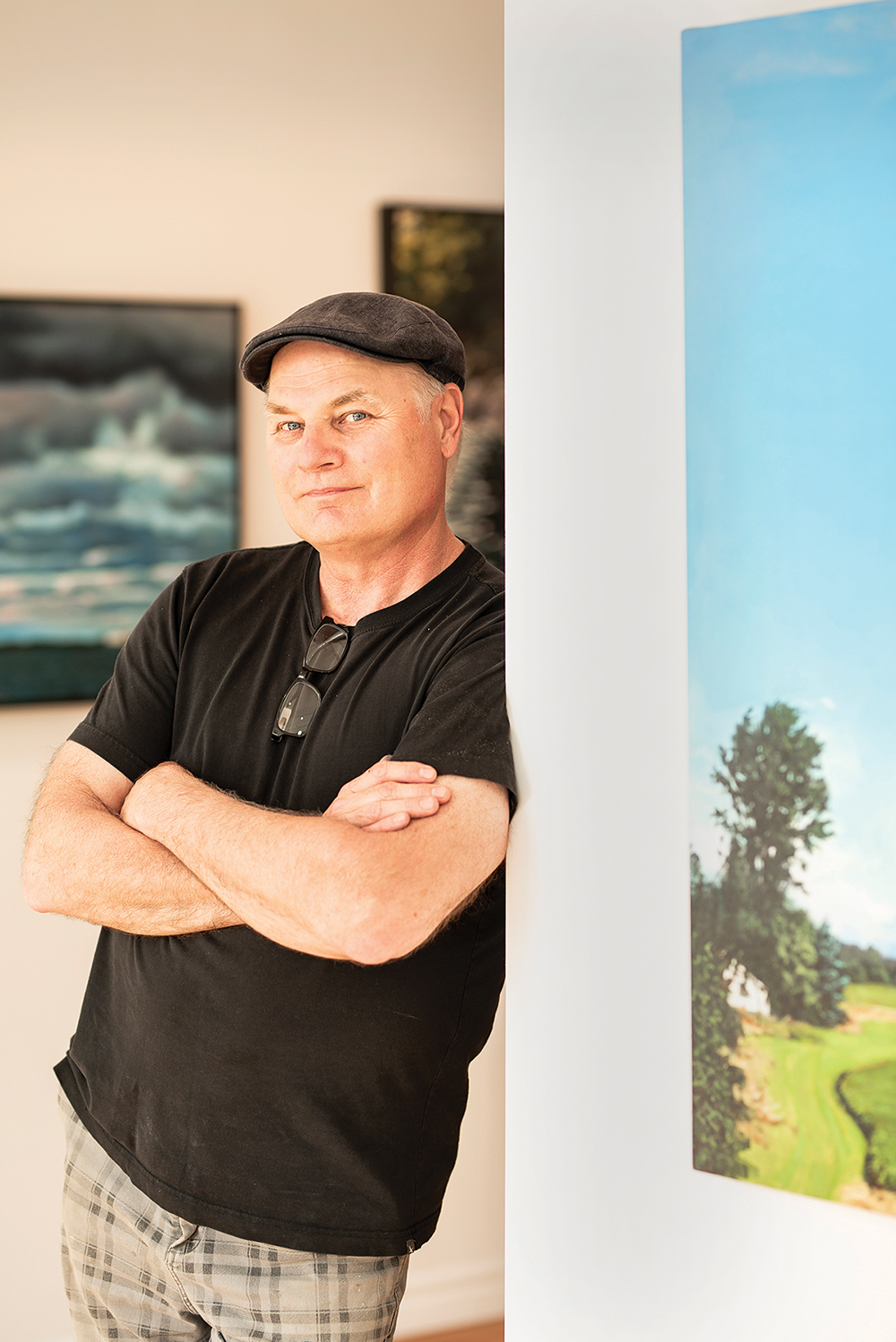
Artists like Don Kilby have also benefitted by teaming up with designers to get their art seen by the public. “I have my work for sale at the Van Allen Design Centre in Collingwood and it is a good combination,” says Kilby. “A customer might choose a sofa and then see my painting hanging above it and end up buying the painting as well.”
Meanwhile, local galleries like the Craig Gallery in Meaford are proving how flexible they can be by “upping our online game,” as owner and artist Bridget Light says. She and her husband, Jonathan Craig, opened the gallery in August 2019 and, with the upheaval of openings and closings, have worked hard to establish an online presence. They put together a 360-degree virtual tour of the gallery, which allows patrons to view the gallery interior and click on a specific work of art to get further details. “This has allowed us to broaden our reach to people outside the area,” says Light, “but generally the next step would be to come to the gallery and see the work in person.”
Last April the couple held a virtual “Artist Talk and Wine Tasting” with artist Philip Craig, Jonathan’s father. The original plan was for the elder Craig to teach a course in the gallery based on his travels and paintings of Tuscany and the wine tasting involved an Italian red from that region. “But that event got squashed,” says Light, “so we decided to hold it online. We sold tickets and donated the money ($900) to the Meaford Food Bank. It was a lot of fun. But because the artist’s studio is in the countryside where internet is spotty, we had a lot of technical issues.”

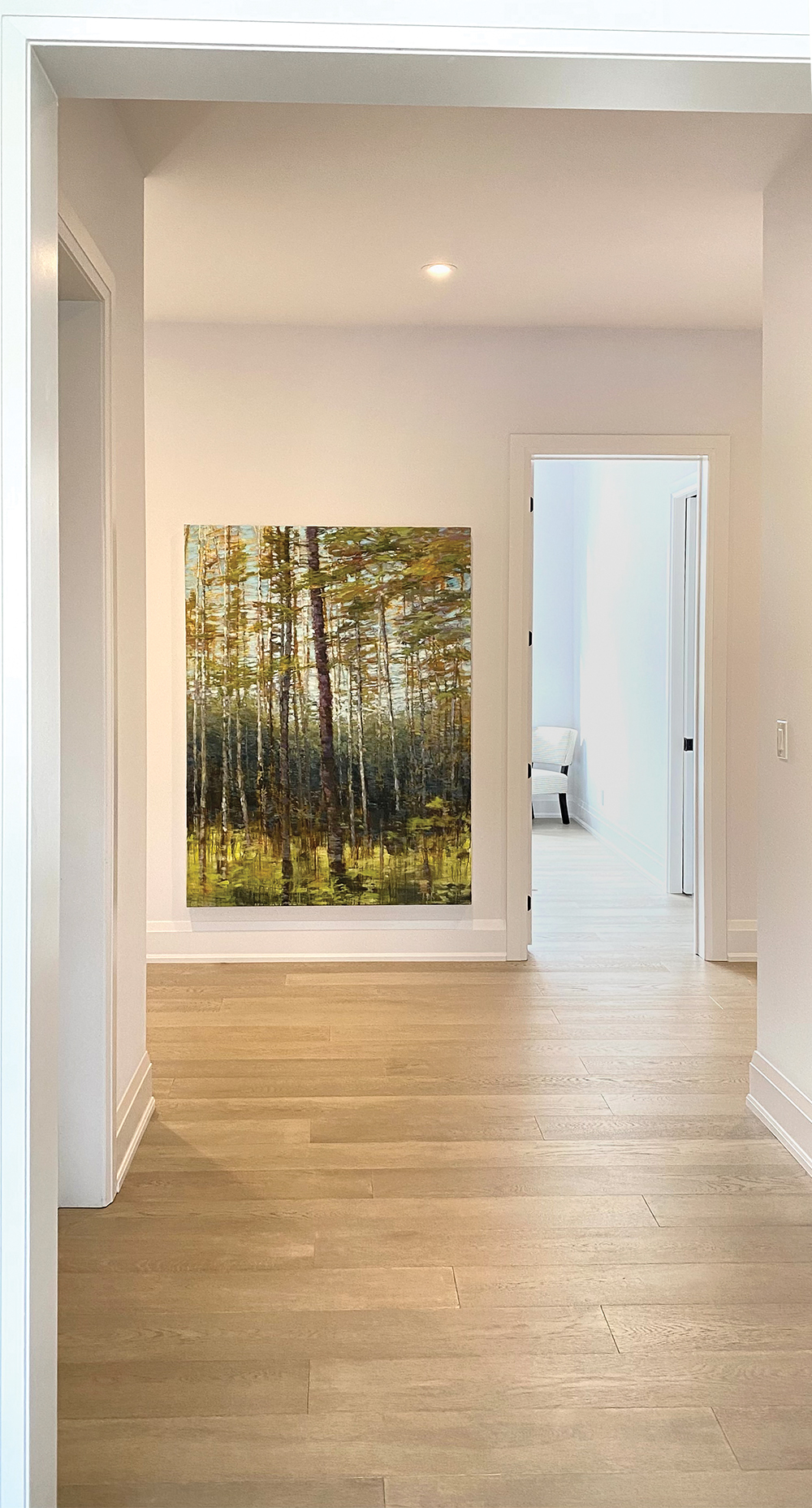
Other artists and photographers are rising to the technical challenges and finding that they can reach audiences online that they never could have reached before. “It has been an up and down ride this past year,” says Kilby, who recently moved to a new gallery space in Clarksburg, “I think all artists are working on new ways to reach customers. Having an engaging, easily navigated website is more important than ever.”
One thing the pandemic has allowed is time to do things that have been on the back burner for ages. In Kilby’s case, he is launching a digital bi-monthly newsletter to keep in touch with existing customers. “I’m already active on Instagram and I find that once customers buy a painting there’s a good chance they’ll come back. The digital newsletter will keep them up to date on my latest work.”
As long as we have walls to fill, the art industry will find ways to reach us. As artists pivot to keep up with the ever-changing situation, those of us stuck at home are finding that scrolling through online viewing rooms, and checking out artist websites, is a relaxing, absorbing way to pass time. It will never replace the visceral experience of being in an art gallery in person. But it may, as I found out, lead to a successful if totally unplanned purchase. ❧







